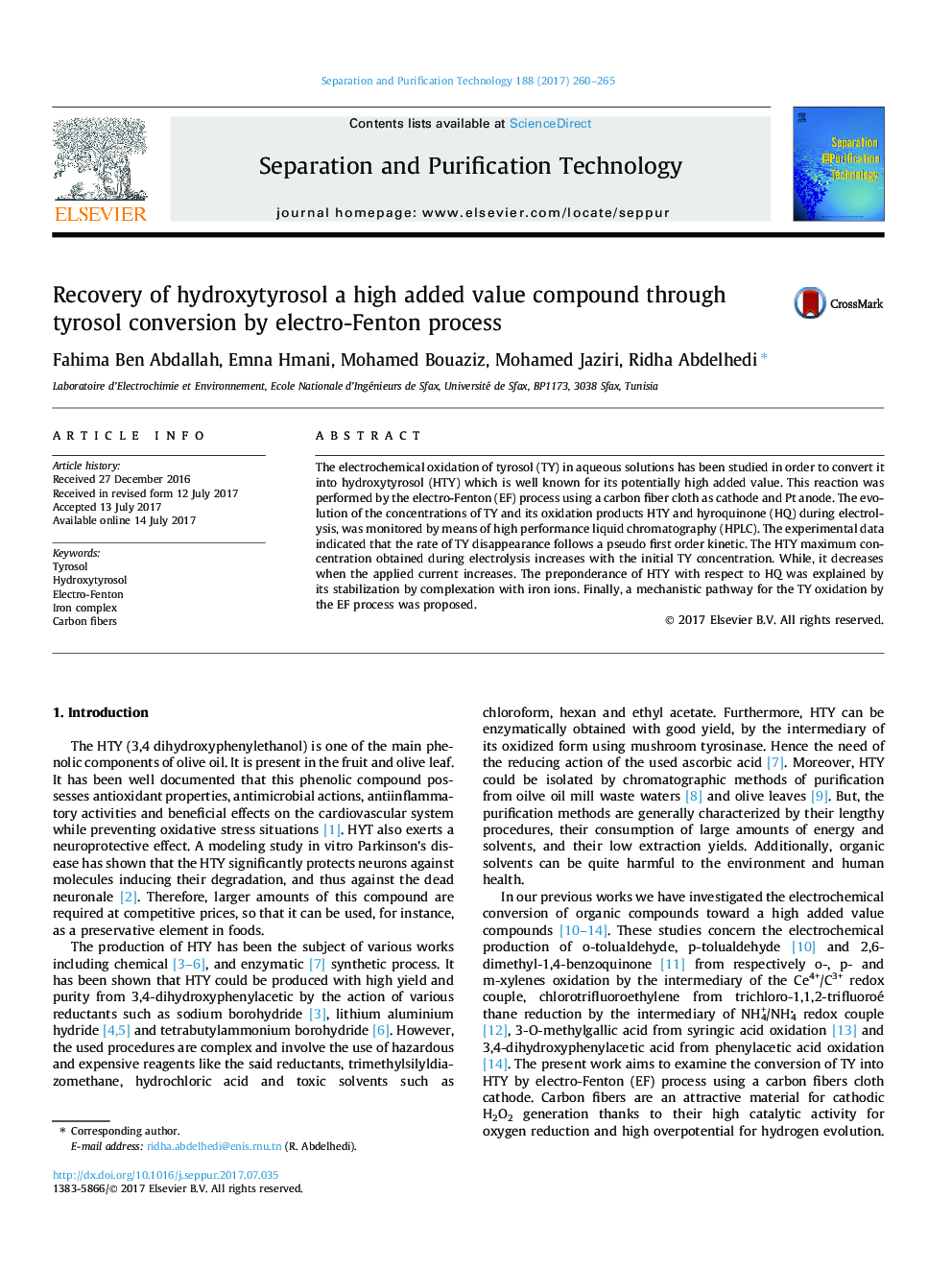| Article ID | Journal | Published Year | Pages | File Type |
|---|---|---|---|---|
| 4989804 | Separation and Purification Technology | 2017 | 6 Pages |
â¢TY oxidation by EF process using a carbon fiber cloth cathode, leads to HTY.â¢Maximum HTY concentration increases with that of TY and at lower applied current.â¢HTY preponderance with respect to HQ is explained by its complexation by iron ions.â¢Mechanistic pathway for the TY oxidation by EF process, is proposed.
The electrochemical oxidation of tyrosol (TY) in aqueous solutions has been studied in order to convert it into hydroxytyrosol (HTY) which is well known for its potentially high added value. This reaction was performed by the electro-Fenton (EF) process using a carbon fiber cloth as cathode and Pt anode. The evolution of the concentrations of TY and its oxidation products HTY and hyroquinone (HQ) during electrolysis, was monitored by means of high performance liquid chromatography (HPLC). The experimental data indicated that the rate of TY disappearance follows a pseudo first order kinetic. The HTY maximum concentration obtained during electrolysis increases with the initial TY concentration. While, it decreases when the applied current increases. The preponderance of HTY with respect to HQ was explained by its stabilization by complexation with iron ions. Finally, a mechanistic pathway for the TY oxidation by the EF process was proposed.
